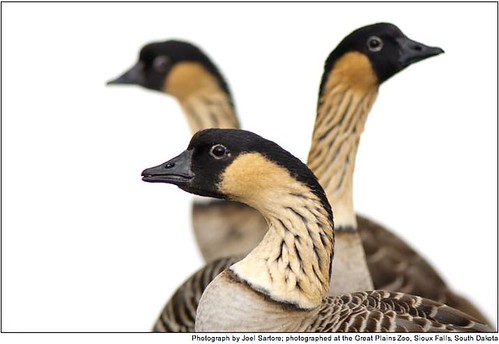tags: Hawaiian Goose, Nene, Branta sandvicensis, Joel Sartore, National Geographic, image of the day
Hawaiian Goose or Nene (Branta sandvicensis)
2,100 (Estimated 2,000 wild and 100 captive).
Image: Joel Sartore/National Geographic [larger view].
Joel Sartore has shared some of his work on this blog before, so I am thrilled to tell you that National Geographic also appreciates his exemplary work. You can view more endangered animals of the United States that were photographed by the talented Joel Sartore here at National Geographic online. All images appear here by permission of National Geographic online.


I'm surprised at the total given as 'captive' - 100 only. The Wildfowl and Wetlands Trust seemed to have plenty at every one of their centres in the UK that I have visited over the years. The numbers were built up by the late Sir Peter Scott at Slimbridge from birds brought into captivity ca.1950, but many have been fed back into the wild population subsequently.
I'd have to agree. I've visited Slimbridge many times and sometimes it seemed you could scarcely move for the things! I haven't been for a few years, though, so maybe things have changed.
Or maybe it's just that they're so tame, and hang around the areas most frequented by visitors.
I must make the effort to visit again this year, when the weather improves a bit.
No, Simon, don't wait. With the current bad winter this could be the best year to see a decent number of wintering wildfowl for a while. I see there has been both the northern white-winged gulls (Iceland, Glaucous) plus tundra bean Goose recently.